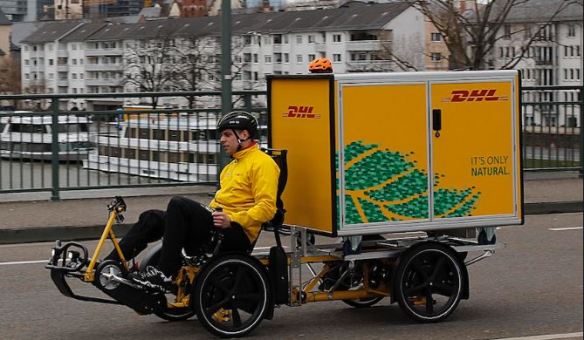Many Londoners now commute by water and visitors use the river and canal waterbus services revived in 1997 when Secretary of State for Transport John Prescott launched Thames 2000. This £21-million project regenerated the River Thames public transport boat services and piers on the river.
Ken Livingstone’s Transport Strategy for London 2005 stated that: “The safe use of the Thames for passenger and freight services should be developed. . . Use of London’s other navigable waterways for freight . . . will be encouraged The first waterbus service was established by British waterways and there are now waterbuses/taxis in 21 other British towns and cities.
In an undated article the Port of London Authority said that nearly 2 million tonnes of cargoes, including aggregates, petroleum products, containers, household refuse and construction spoil, are carried up and down the Thames every year, removing thousands of trucks from the capital’s roads.
In 2019: Powerday announced a partnership with IRecycle: thousands of tons of waste mixed recyclables, generated by the booming houseboat population, are now being carried by barge instead of road-going refuse trucks, collected by IRecycle’s barge from Camden Market in north London and carried to Powerday’s Material Recycling Facility at Old Oak Sidings, Willesden Junction.
New piers planned for London’s river buses are to be built by developers Ballymore and Oxley to serve Royal Wharf residents who, as they say, ‘will be able to ‘hop on the Thames Clipper to Canary Wharf’. There are plans for a new riverboat pier on the Greenwich Peninsula; a second pier could be built when the housing development on the site of Morden Wharf has been completed and there are also plans for new piers at Charlton (as part of the recently approved masterplan), Barking, Thamesmead and Erith.
International courier’s ‘go green’ waterway delivery strategy
Last year, DHL Express, which provides international courier, parcel, and express mail services, ran a pilot project, using delivery barges on the Thames, as part of its “go green” strategy. It was successful and the DHL boat on River Thames now regularly replaces transfers via trucks, using a daily riverboat freight service to transport small packages into central London for last mile delivery by bike. The new river freight route through London, operated by Thames Clippers Logistics, is part of DHL’s commitment to reduce congestion.
In March, Kathy Bailes, writing in the Isle of Thanet News, reported that the Port of London Authority (PLA) has confirmed that talks are underway with owners RiverOak Strategic Partners (RSP) over the possibility of moving freight landed at Manston airport (completion in 2023) on a route from Ramsgate Port and up the River Thames. The Loadstar reported that in September Tony Freudmann, director of Manston, was talking to the Port of London Authority to move goods by water from Ramsgate and then up the Thames to central London, “a clean solution to cut out lorries”.
Above: Tideway: keeping lorries off London roads & producing 90% less CO2 by using water transport.
Companies such as GPS Marine Contractors Ltd are recruiting people to work on the fleet of river tugs used on the Thames Tideway project, offering good conditions and excellent rates of pay. Various ranks are needed: masters, mates, engineers and deck hands. The company is also looking to recruit its 3rd group of apprentices.
Environmental and employment prospects are brighter on the green highway.
o
.









